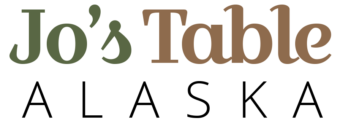From Laura Weingartner, IANRE
What started as an idea to get Interior Alaska’s farming community together to communicate, learn from and support each other came to fruition in late January. Over 100 farmers, producers, aspiring farmers and agriculture supporters gathered on Jan. 31 and Feb. 1 for the inaugural Interior Alaska Farm Forum.
For two days, attendees listened to presentations, updates and panel discussions focused on a wide range of topics relevant to farming in Alaska’s unique environment. Topics included crop storage, farm property taxes, grants, plant adaptation and how to start a farm.
Highlights of the event included “lightning rounds,” where people gave short updates about their work. Lightning- round presenters included Christine St. Pierre, co-owner of Goosefoot Farms, who gave encouraging advice to beginning farmers; Emily Lanni, of Tusk Farm, who described her process of raising Mangalitsa pigs; and Liam Wade, a Future Farmer of America student, who explained how they use compost tea in his school’s hydroponics system, among many others.

The forum emphasized the diversity of people growing crops and livestock in Alaska. While no two farms are the same, farmers still have much to learn from one another.
“We’ve been homesteading for 10 years and just starting to get traction as a local producer. This came at the perfect time for us and we came home with so many helpful resources,” said Chelsey Barney, owner of The Barneyard Farm with her husband, Sam. The Barneys have a herd share and sell goat milk.
A long lunch with facilitated discussions on various topics was built into the schedule to connect farmers. People discussed common challenges, like the difficulty of finding compost, shared farming techniques and some even made business partnership connections.
“The success [of the forum] was due to farmers being willing to share and learn from others,” said Melissa Sikes, a Fairbanks Soil and Water Conservation District education specialist and the event’s coordinator.
In her welcome speech, Jodie Anderson, director of the University of Alaska Fairbanks Institute of Agriculture, Natural Resources and Extension, echoed the theme of collaboration throughout the forum.
“Your success promotes more success, and that is the strength of Alaska farmers,” she said.

Many farmers shared this sentiment, emphasizing that fellow farmers shouldn’t be seen as competitors but as members of a supportive community working together for mutual success.
This forum was made possible by federal specialty crop block grant funds provided by the Alaska Division of Agriculture as part of a larger effort by the state to boost production and consumption of Alaska crops, support farmers and strengthen local communities. This grant will also fund a second forum in 2027.
Due to overwhelming interest in this event, many people could not attend because of space constraints. Sikes hopes to find a way to offer the event again in 2026, as well as 2027, and accommodate more participants.
IANRE staff assisted in organizing the forum and are working to increase support for farmers and local producers. This year, UAF’s Board of Regents approved a capital request for $5 million to help support Alaska’s food systems. The request is working its way through the legislative process.
Part of this request would be used to hire an agriculture/horticulture specialist in Interior Alaska. The specialist would focus on supporting home and commercial crop production and cultivating native plants of cultural and commercial significance.
The road toward a stronger Alaska food system may be a windy one, but it’s clear that it has many proponents. Sikes, when asked what she hopes people took away from the forum, said, “a sense that we are making progress in increasing our farms and farmers in the Interior and that there is plenty of support to help everyone be successful.”

